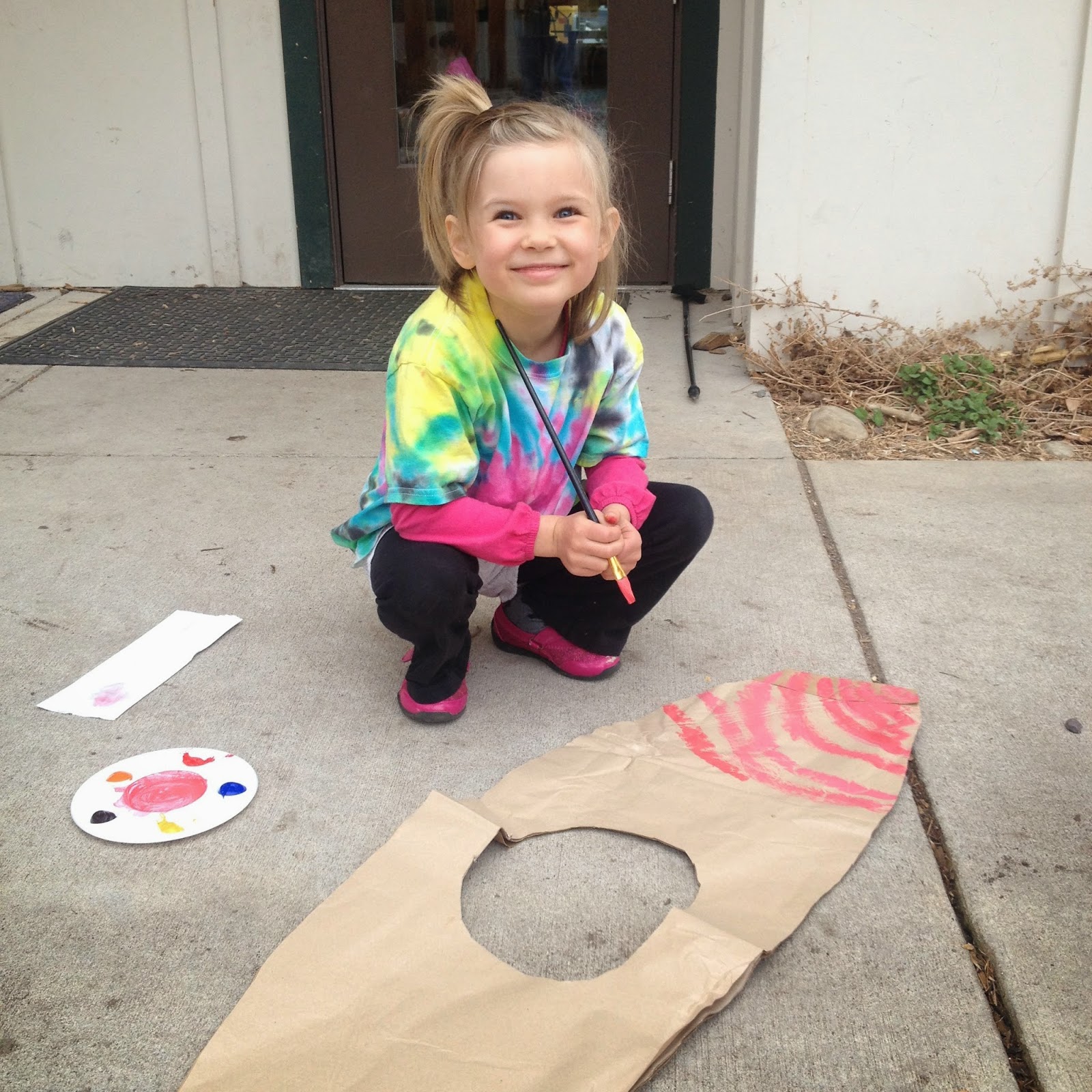Last weekend Becca and three brave volunteers headed out to a stream in Lolo on a chilly, overcast Saturday. Halfway along the drive, cell phone service slipped away, and soon after we turned off the main road, so did the pavement. Becca gritted her teeth and clutched the steering wheel, trying to convince the car to drive steady and straight, rather than slide off in the mud. However, the mud could've been thicker, the grooves in the road deeper, and the pellets of rain harder, and we made it safely to our destination.

The infrequently used trail to the river led through a patch of woods, full of plants soaking up the remnants of the recent April rainfall. The colors brightened with the moisture. The trail stopped abruptly at the water's edge, and we skirted carefully under some low hanging branches of pine to the small clearing (pictured left) where we set our supplies.
The small trees stretched their brilliant burgundy new growth out to us, each branchlet tipped with a soft yellow-green bud. The floor was scattered with white trilliums, reminding me of home. (In Washington, 5th grade camp took us to the Olympic Peninsula, where they were everywhere.)
The stream was quite gorgeous, frothy and glittery. I put on the waders I had found in the basement (an adult pair this time, so I wouldn't have to cram into the kid overall-waders! They were patched up in places, but that means the holes were all sealed off, right?)
While setting up the transect I noticed a gradually cold trickle on the back of my leg. It was just the water rushing past running off with my body heat, I thought at first. The waders don't have much insulation. But the cold feeling persisted, and dominated one leg more than the other... I turned my head for the fifth or sixth time and noticed a large rip down the back of the wader. To my great disappointment, the waders I had put my faith and excitement in had let me down. As long as I faced upstream, the front of my leg would mostly block the current from seeping in until we finished measuring the stream's width. Then I could put on the back-up, slightly-too-big waders I had brought just in case.
When Becca and I reached the center of the stream I noticed some strange lights on a boulder resting on the riverbed. They weren't flickering with the current, so it wasn't just sunlight reflecting off the surface of the water. Next to the boulder was a smaller stone, riddled with tinier lights. I made note of the location in my head so I could return later.
I made it to shore, not too soaked, and only on one leg, and walked over to the pile of waders. I picked one up, and set it aside. It was the left boot and I needed the right boot. I picked up the other one and.... it was a left boot too! Since it was too big for my foot, I decided I could probably wear it on the wrong foot and it wouldn't be too uncomfortable. It would fit, at least, and was better than having a leak. Becca graciously let me borrow her spare wool socks.
I went back into the river and found the rock I had kept in mind. It did indeed sparkle.
By this point the next task was pebble count. Becca had brought gloves for us this time, hoping to spare our hands the frozen, numb experience of Stream Teams past. I went to put a pair on and I had the opposite problem as the waders. I had two right hand gloves! The gloves turned out to be ineffective anyway, as the water was deeper than they were long, and just poured in through the top. Also like the waders, the rubber was not very insulating. Becca and Jeremy gave up on the gloves, while I stayed near the shore where it was shallow and only dipped my right hand in to pick up rocks. During this procedure we found that the stream was littered with glittering rocks.
We concluded the expedition as always, with thermoses of hot water, little cups, and packets of instant hot chocolate. Despite unexpected gear malfunctions, we got the information we came for (plus a little fun), making this another successful, if extra interesting, Stream Team.
-Cassie Sevigny, WEN volunteer













%2B2.jpg)
%2Bband.jpg)

.jpg)

.jpg)
.jpg)













